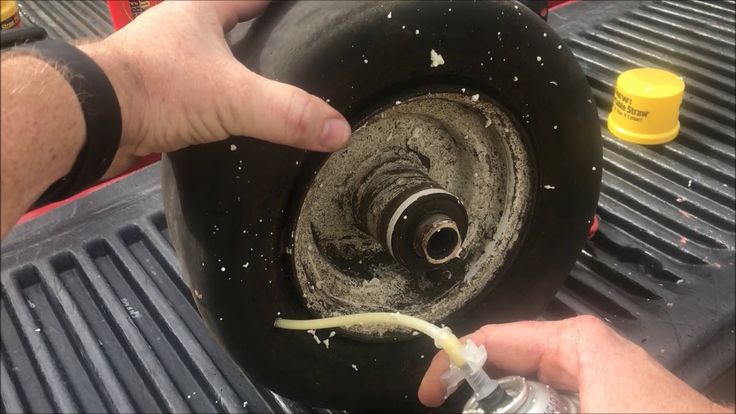I have this wheelbarrow with tubeless tire, I had to replace it with the new one, however I don't see how to pump it! The tire is quite stiff, and it was tricky to put it on the rim, but now it looks like the tire isn't well adjusted to the rim. Did I do something wrong? How do people normally pump this type of tires?
2
Looks like the typical gap one gets when mounting a tubeless tire. You'll need to get the bead to seat against the rim as you pump air (hopefully quickly) into the tire - a hand pump might not do it.
Sometimes you can jiggle the tire to effect a temporary seal around the bead as your compressor dumps air in. Using a clip-on tire chuck will help.
Some folks "squeeze" the tire with a strap around the tread area. I've seen a device called a bead expander, and this guy shows the use of some large tie-wraps to achieve the same thing.
5
If you're not afraid of a little fire then this could work:
https://youtu.be/DJiqbAVsxRY
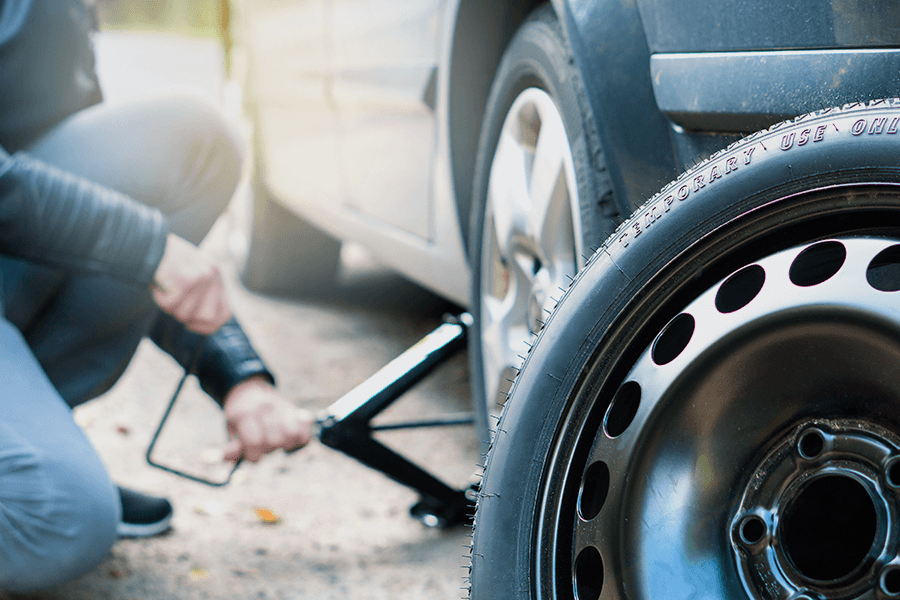 You should do this by beating the tire with a long stick to avoid personal damage in the event of a tire explosion.
You should do this by beating the tire with a long stick to avoid personal damage in the event of a tire explosion.16
Take it to the local tire store, and ask them to inflate it - they'll use their bead-blaster machine to mount it. Should be little to no cost.
The next time it happens, ask the tire store to put an innertube in the tire. That solves the problem forever. (Only do it the 'next time', because it may never happen again..)
4
I've had decent luck using a couple of plastic bags and even saran wrap. I rolled them up and placed them near the rim so that it fills in the gap enough to get a better seal. The pump then works well enough to expand the tire.
I rolled them up and placed them near the rim so that it fills in the gap enough to get a better seal. The pump then works well enough to expand the tire.
The gap shown in the photo is small enough for this trick to work.
Long term solution is to have it filled with foam.
The people who recommend a strap around the perimeter of the tire are correct, and such straps, often inflatable, are made for that purpose. However, a couple of times in a pinch, I have removed the belt I was wearing and wrapped it around the tire and pulled it in as tightly as I could. This has actually worked for me. You should probably remov the valve stem to let the air in faster and thus with more force.
2
I've likewise used my belt. Put the belt around the tread of the tire, squeeze the tread inward to get the bead to push out and set against the rim. Then inflate the tire.
I've had to do it several times over many years, with the same tire.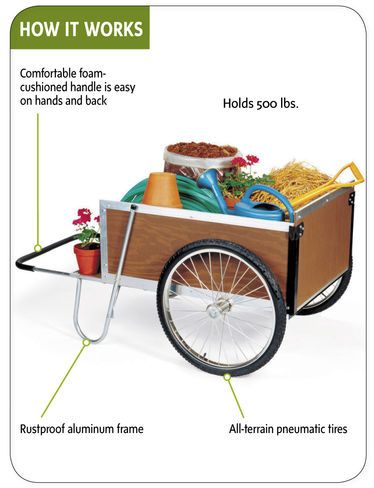 The tire holds air just fine, for months, even under weight. But after going un-used for several seasons it eventually leaks out, enough to loosen the bead and lose the rest.
The tire holds air just fine, for months, even under weight. But after going un-used for several seasons it eventually leaks out, enough to loosen the bead and lose the rest.
A strap with a come-along ratchet is easier, but a regular waist belt works in a pinch.
If the tire went flat it has a leak. Just reinflating the tire will not fix the problem. The most likely causes are a tire puncture, or a bead leak from either degraded rubber on the tire or rust on the wheel (not likely in your case with a plastic wheel). The easiest solution is to remove the wheel, the tire and the Schrader valve. Purchase an inner tube of the correct size. Most big box stores carry them. If you have trouble finding the correct size for a wheelbarrow look for a tube designed for a snow blower or lawnmower.
4
Sign up using Google
Sign up using Facebook
Sign up using Email and Password
Required, but never shown
Required, but never shown
By clicking “Post Your Answer”, you agree to our terms of service, privacy policy and cookie policy
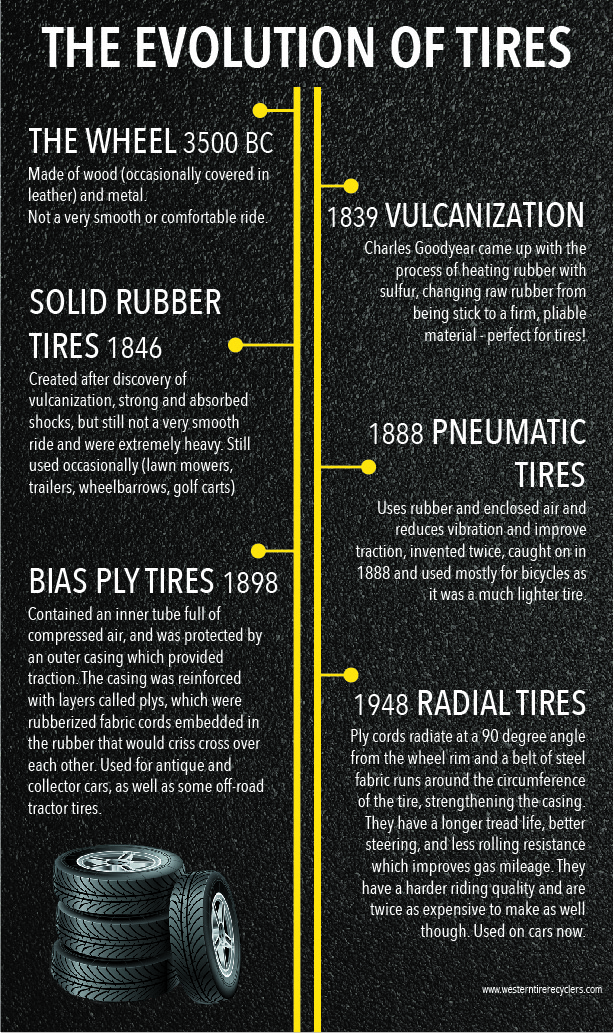 | Practical Machinist
| Practical Machinist Im tired of filling -fixing my wheelbarrow and some other small tires, I know that solid or similar tires are available but are pricy and I have at least 6 in use and are still good.
Question is has anyone ever removed the tire valve and "Injected" expanding or window- door foam into the tires and if so has it worked?
Thanks
Usually installing an inner tube is the best solution. Spray foam may take a set while the equipment is sitting and develop a permanent flat spot. Permanent it will be because the adhesive nature of spray foam will glue the rim and tire together permanently. Breaking down the bead and coating the edge with tire sealant before re-inflating is also a possibility. If you forgo the tube I would suggest leak checking the whole assembly before adding sealant. These small tires made "overseas" often have small porosities in tread and sidewall that must be patched from the inside.
Spray foam may take a set while the equipment is sitting and develop a permanent flat spot. Permanent it will be because the adhesive nature of spray foam will glue the rim and tire together permanently. Breaking down the bead and coating the edge with tire sealant before re-inflating is also a possibility. If you forgo the tube I would suggest leak checking the whole assembly before adding sealant. These small tires made "overseas" often have small porosities in tread and sidewall that must be patched from the inside.
Redlee, I have a skidloader that I foamed the tires on when I bought it. It works very well in my application. The foam when cured remains pliable like soft rubber. It is pretty pricey to foam a skidloader tire and the foam is heavy. Still I have considered having the tires on my wheel barrow foamed.
It works very well in my application. The foam when cured remains pliable like soft rubber. It is pretty pricey to foam a skidloader tire and the foam is heavy. Still I have considered having the tires on my wheel barrow foamed.
I would be concerned that window foam like "Great Stuff" would crumble over time in use.
It may still meet your needs in a crumbled form if you can plug the valve stem hole.
Tim
I think the stuff for windows and doors would be much too brittle for that.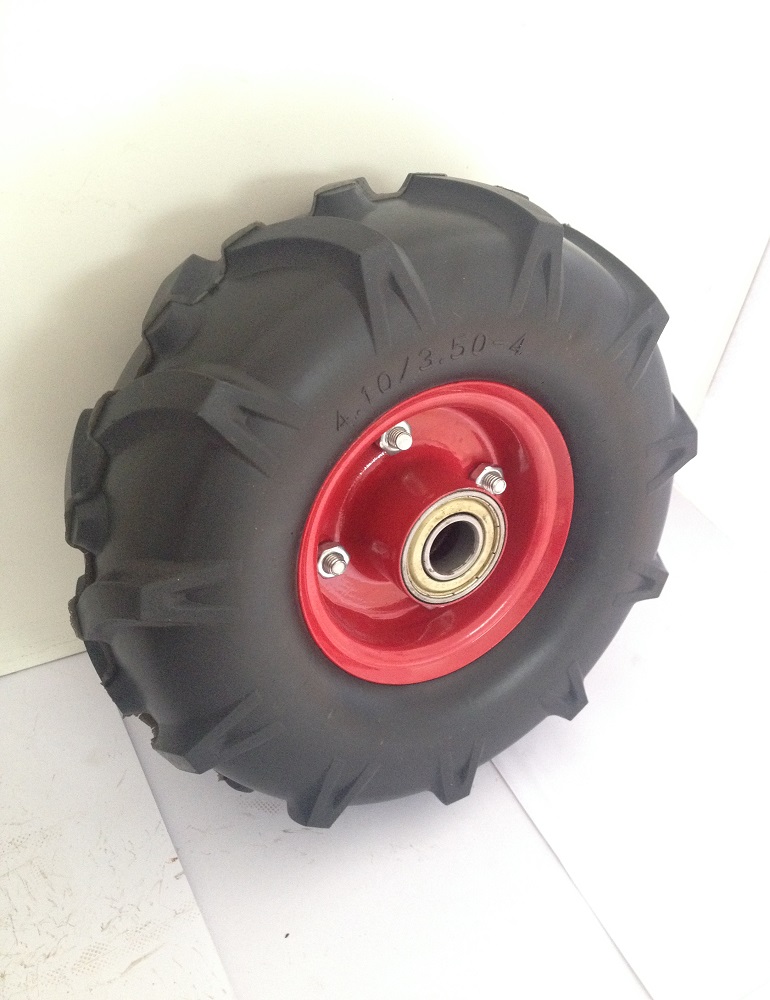 The old stuff I've seen always crumbles when removed.
The old stuff I've seen always crumbles when removed.
Also, you'd need to get all the air out so the foam can fill it completely. Think of bleeding out a brake system. Any air pockets in there would be soft spots.
However - quick google search turned up this. He drilled through the tire and injected it, eliminating the air bleeding i mentioned. I'd like to know how well it held up over time.
Country Lore: Avoid Flat Lawn Mower Tires - DIY - MOTHER EARTH NEWS
If you could get some softer urethane that might be better.
v
The spray foam in the can does not work in tires.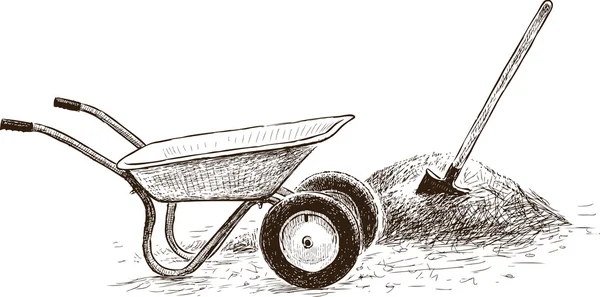 Its not the same stuff. But, I have sent tires out for proper foaming. About $15-20 to do a wheelbarrow tire. The solid wheelbarrow tires are only about $40, so I'd go that rought.
Its not the same stuff. But, I have sent tires out for proper foaming. About $15-20 to do a wheelbarrow tire. The solid wheelbarrow tires are only about $40, so I'd go that rought.
Josh
I have to second Scottl's suggestion should you decide against
resilient (NOT crumbly "Good Stuff") foam. I bought a replacement tube for mine and that has resulted in a tube that only needs once or twice a year inflation. The stock tubes are very thin and a POS. The replacement is much thicker both in the body and even the stem---had to drill out the stem hole a bit.
The stock tubes are very thin and a POS. The replacement is much thicker both in the body and even the stem---had to drill out the stem hole a bit.
Denis
Took my tubeless wheelbarrow wheel to the tire store and they put a tube in for $14.00 out the door. I was going to just buy a tube and took the whole wheel in to be sure I got the right size. The counter guy said "here, I'll have one of the guys put that in for you". Done. I have not had to air it for a couple of years now. This is not a situation that requires modern miracle cutting edge genius solutions.
This is not a situation that requires modern miracle cutting edge genius solutions.
I have had good results from "SLIME" flat fix.
Sweep your floors then you wouldn't have nails in your tires
I've had to fix/replace wagon, wheelbarrow, and lawn tractor tires. Patches are okay and last a bit, but the best solution is get a new innertube if your tire takes one. Once a tire is punctured, no bike repair kit can fix it.
Patches are okay and last a bit, but the best solution is get a new innertube if your tire takes one. Once a tire is punctured, no bike repair kit can fix it.
I've heard the best thing for tires is fix a flat, it actually melts the tire where the puncture and fills the tire up enough for light use. Good thing wheelbarrows don;t have tire pressure sensors
henrya said:
Took my tubeless wheelbarrow wheel to the tire store and they put a tube in for $14.
00 out the door. I was going to just buy a tube and took the whole wheel in to be sure I got the right size. The counter guy said "here, I'll have one of the guys put that in for you". Done. I have not had to air it for a couple of years now. This is not a situation that requires modern miracle cutting edge genius solutions.
Click to expand...
Wasn't looking for a Genius solution, I live along way from a tire shop and am willing to do the best way. Just wondering if it would work and if some else had tried it. Thats all!
[QUOTE2407140]<>
I've had to fix/replace wagon, wheelbarrow, and lawn tractor tires. Patches are okay and last a bit, but the best solution is get a new innertube if your tire takes one. Once a tire is punctured, no bike repair kit can fix it.
Patches are okay and last a bit, but the best solution is get a new innertube if your tire takes one. Once a tire is punctured, no bike repair kit can fix it.
<>[/QUOTE]
Hmmmm, as a person who rides 5000+ miles a year on my bike and has repaired a fair number of tubes, I would say that a properly repaired tube can last for years----at 120 PSI or more. I maintain my bike and my wifes bike. So, I 've repaired my share of tubes over 40 year's time. It's been a good number of years since I had a patch fail.
Denis
Here's my two cents. My day job is concrete contractor. I ( my guys) have worn out literally hundreds of wheelbarrows over the years. When the WB is full of concrete it weighs at least 500 lbs. The solid and foam filled wheels don't roll as easily as air filled wheels do and my guys won't use them. They tend to disappear if I bring them around. I've tried adding the sealant but haven't had good luck with it. I recommend tubes and a couple of extra wheels on hand to replace when I need it now ( as in right now). On the other hand I've good luck with sealant on the bigger tires that I run on my skid steers. I've used solids, ($650 a pop), Foam filled, ($200 just to fill each one with foam),and sealant ($40 to put sealant in ). We use these skid steers to demo concrete which is extremely hard on the tires and the machine due to the rebar and wire as well as the hard rubble that we end up driving on. The solids are too expensive and hard on the machine and rider. The foam are too expensive but ride a little smoother but are heavy as hell.
My day job is concrete contractor. I ( my guys) have worn out literally hundreds of wheelbarrows over the years. When the WB is full of concrete it weighs at least 500 lbs. The solid and foam filled wheels don't roll as easily as air filled wheels do and my guys won't use them. They tend to disappear if I bring them around. I've tried adding the sealant but haven't had good luck with it. I recommend tubes and a couple of extra wheels on hand to replace when I need it now ( as in right now). On the other hand I've good luck with sealant on the bigger tires that I run on my skid steers. I've used solids, ($650 a pop), Foam filled, ($200 just to fill each one with foam),and sealant ($40 to put sealant in ). We use these skid steers to demo concrete which is extremely hard on the tires and the machine due to the rebar and wire as well as the hard rubble that we end up driving on. The solids are too expensive and hard on the machine and rider. The foam are too expensive but ride a little smoother but are heavy as hell.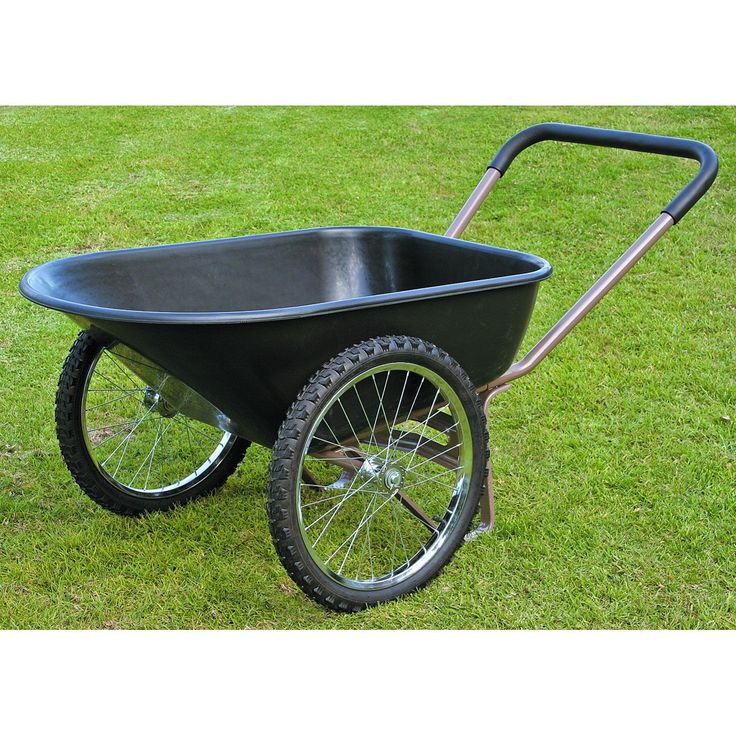 The sealer filled tires ride like air and haven't leaked (yet, 1 year).
The sealer filled tires ride like air and haven't leaked (yet, 1 year).
dgfoster said:
[QUOTE2407140]<>
I've had to fix/replace wagon, wheelbarrow, and lawn tractor tires. Patches are okay and last a bit, but the best solution is get a new innertube if your tire takes one. Once a tire is punctured, no bike repair kit can fix it.
<>Click to expand.
..
Hmmmm, as a person who rides 5000+ miles a year on my bike and has repaired a fair number of tubes, I would say that a properly repaired tube can last for years----at 120 PSI or more. I maintain my bike and my wifes bike. So, I 've repaired my share of tubes over 40 year's time. It's been a good number of years since I had a patch fail.
Denis[/QUOTE]
Well keep in mind I use wagons and wheelbarrows in the woods too, with sticks poking at the tires. And the lawnmower is 8 years old mowing two acres every week during the summer.
Do you really fill your bikes tires to 120 PSI? That seems a lot for a road bike. What patch kits do you use?
Spyderedge said:
Hmmmm, as a person who rides 5000+ miles a year on my bike and has repaired a fair number of tubes, I would say that a properly repaired tube can last for years----at 120 PSI or more.
I maintain my bike and my wifes bike. So, I 've repaired my share of tubes over 40 year's time. It's been a good number of years since I had a patch fail.
Denis
Click to expand...
Well keep in mind I use wagons and wheelbarrows in the woods too, with sticks poking at the tires. And the lawnmower is 8 years old mowing two acres every week during the summer.
Do you really fill your bikes tires to 120 PSI? That seems a lot for a road bike. What patch kits do you use?[/QUOTE]
Yes, I do inflate them to 120 and more often 140 PSI. They're 23mm Rubino pro II TIRES rated for that pressure and I have never had a blow out . Riding them at high pressure reduces "snake bite" punctures and may reduce (debatable) rolling resistance. Well patched tubes should not fail at the patch.
Denis
No such thing as a "foam filled" tire unless some backwoods hick tried it with "Great Stuff" or similar. The material used is urethane liquid, not foam. This is the same stuff as the old "Superball" toy. It is pumped in under pressure with the tire upright and a hole drilled at the top for air to escape. When the urethane comes out the hole a sheet metal screw is used to plug it and the tire is laid down so that it polymerizes without a flat spot. The tires are very heavy and not useable at high speeds. It is quite expensive. I haven't had one done in over 20 years but back then it was over $1.40 a pound.
The material used is urethane liquid, not foam. This is the same stuff as the old "Superball" toy. It is pumped in under pressure with the tire upright and a hole drilled at the top for air to escape. When the urethane comes out the hole a sheet metal screw is used to plug it and the tire is laid down so that it polymerizes without a flat spot. The tires are very heavy and not useable at high speeds. It is quite expensive. I haven't had one done in over 20 years but back then it was over $1.40 a pound.
Hi,
I have used this stuff in the tractor tires, wagon tires, etc, works great for me.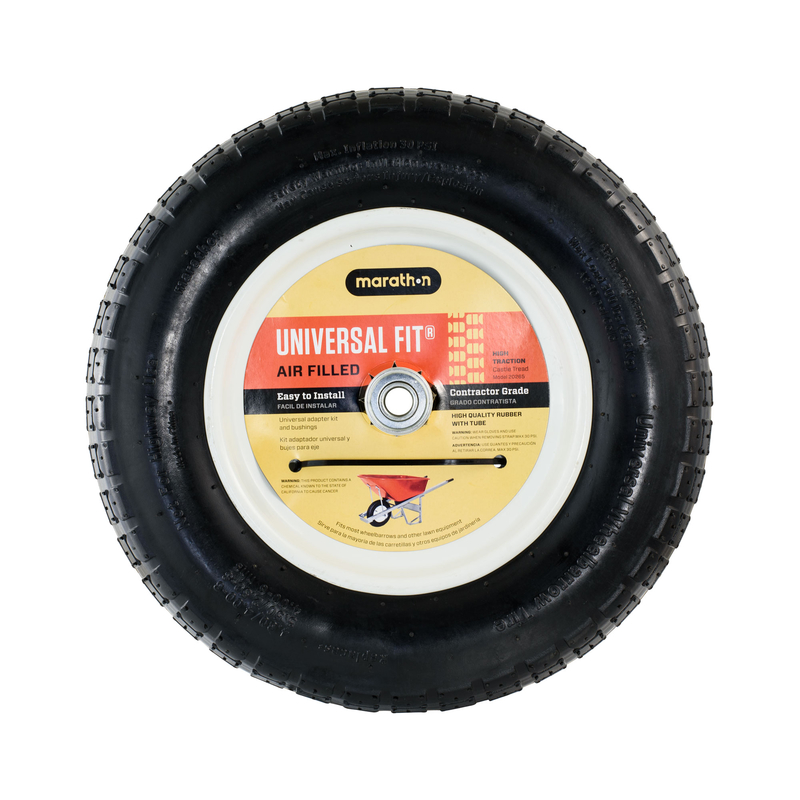
Ultraseal Application Charts | GEMPLER'S
Frank
tdmidget said:
No such thing as a "foam filled" tire unless some backwoods hick tried it with "Great Stuff" or similar. The material used is urethane liquid, not foam. This is the same stuff as the old "Superball" toy. It is pumped in under pressure with the tire upright and a hole drilled at the top for air to escape.
When the urethane comes out the hole a sheet metal screw is used to plug it and the tire is laid down so that it polymerizes without a flat spot. The tires are very heavy and not useable at high speeds. It is quite expensive. I haven't had one done in over 20 years but back then it was over $1.40 a pound.
Click to expand...
Hey! Backwoods Hick, I take pride in being one Thank you !
Spyderedge said:
.
....................
I've heard the best thing for tires is fix a flat, it actually melts the tire where the puncture and fills the tire up enough for light use. Good thing wheelbarrows don;t have tire pressure sensors
Click to expand...
Well, maybe for a wheel barrow tire. The chemicals in Fix-A-Flat are very corrosive and will corrode the steel rim or destroy an aluminum rim if left in. Probably why the instructions on the can say to use it to inflate the tire and get home, then get to a tire repair place ASAP and have the tire unmounted and all the chemical flushed out. Also, probably why the product is called Fix-A-Flat and not Fix-A-Slow-Leak.
Steve
I have used the green slime on lawn equipment tires.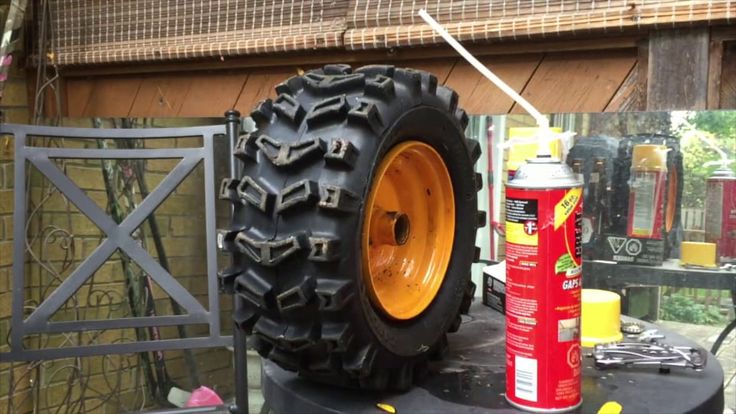 As long as they are used regularly, not allowed to sit, it seems to work pretty good. Some of the old tire with dry rot get sealed up that way. When that dosent work, put a good tube in it, not a $3 chinese one.
As long as they are used regularly, not allowed to sit, it seems to work pretty good. Some of the old tire with dry rot get sealed up that way. When that dosent work, put a good tube in it, not a $3 chinese one.
Often, spending very little time, you can avoid additional costs, which are already enough for those who spend the summer in the country and in country houses, taking care of buildings, gardens and gardens. In this particular case, the conversation, or rather, the video sequence, will be about how to bring the wheel of a garden cart back to life in a few minutes. A garden wheelbarrow in the country is never idle: take out the garbage, then bring building materials, then transport the crop. And, of course, with such intensive use, the wheel periodically fails: the tire is punctured, the chamber bursts, etc. But, before you go to the market and buy a new wheel, see how quickly you can disassemble the wheel, patch it, or, in case of significant damage, replace the tube and tire, and return everything to its original form.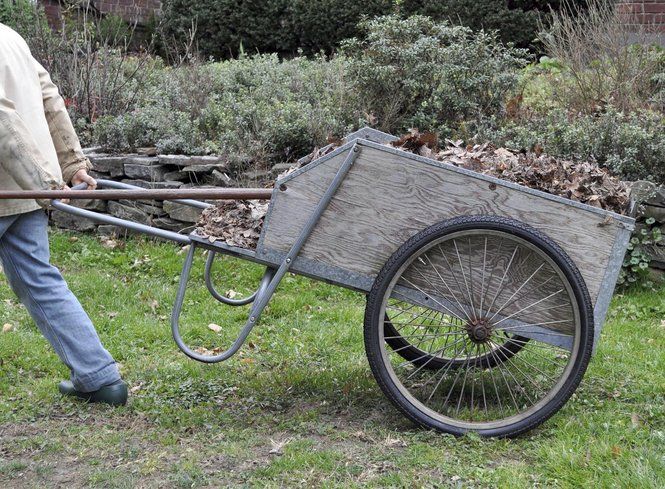 nine0003
nine0003
We want you to see how easy it is to replace a punctured, cracked, or simply worn tube wheelbarrow wheel . Of course, we do this job every day, and we boarded several hundred thousand of these wheels before we decided to post this video. The video lasts only a couple of minutes, but after watching it and following the simple sequence of actions we perform, you will be spared unnecessary time costs.
Wheel mounted on garden wheelbarrow is typically 3.25-8, slightly smaller in diameter than wheelbarrow for construction wheelbarrow .
First you need to unscrew the spool and completely deflate the wheel to make it easier to remove the tube tire from the rim.
Then we insert the new tube into the tire, be sure to carefully straighten it around the entire circumference inside the tire.
Once, on a video about the repair of a construction wheelbarrow wheel, we received a comment from a man in which he assured us that our inner tube with a tire was made of soft rubber, while his was made of oak and it was impossible to do what was shown in the video.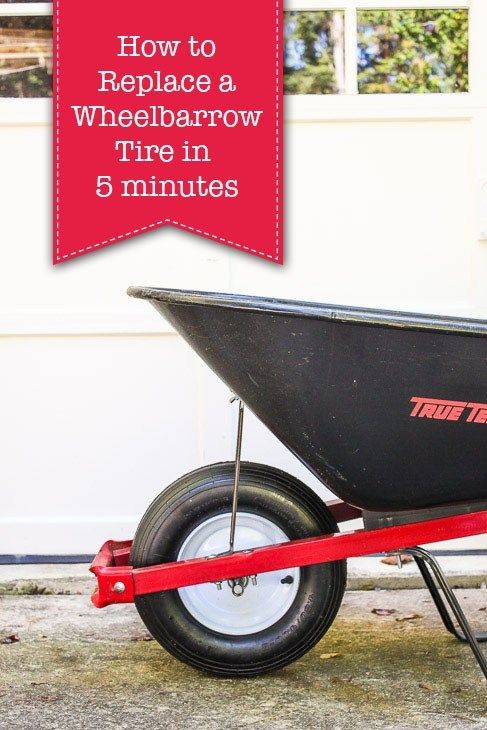 So, if you carefully distribute the tube inside the tire before you put all this on the rim, any tire set, of course, if it is matched to the size of the rim, regardless of the softness of the rubber, will definitely fit on the rim. nine0003
So, if you carefully distribute the tube inside the tire before you put all this on the rim, any tire set, of course, if it is matched to the size of the rim, regardless of the softness of the rubber, will definitely fit on the rim. nine0003
If we don't do it with due diligence, then we won't put the kit on the disk. There is no need to watch how quickly the person in the video does this work, he does it all the time, just pay attention to how carefully the tire set is prepared before putting on the disk.
The next step is to insert the nipple into the hole on the disk and insert the pre-assembled tire kit with the inner chamber with force in a circle.
Inflate the wheel and close the nipple with a cap. That's it! nine0003
In the video, we use a compressor to inflate a tire, but it can be inflated almost as quickly with a conventional car pump. Everything else is done exclusively by hand and does not require any improvised means.
And in conclusion, once again I would like to draw your attention to the fact that if something does not work out for you, then this happens not because the rubber is “oak”, but because the sequence of actions is violated.
We often have to bead the wheels in winter, at minus 15. Knowing the properties of rubber, you can easily guess that any rubber will be “oak” at such a temperature, but we spend exactly the same amount of time as in this video. nine0003
Wheel bearing replacement
We select a wheel for a garden wheelbarrow
Contents:
Every gardener and summer resident constantly needs to transport cargo across the territory of the plot or garden.-Step-1-Version-2.jpg/670px-Fix-a-Wheelbarrow-Tire-(tubeless)-Step-1-Version-2.jpg) The need to transport fertilizers for feeding plants or building materials can arise at any time, so the purchase of a garden wheelbarrow is often required. Devices for transporting goods over short distances differ in many parameters: size, number of rollers, tire material, etc. And you need to pay attention to all this when choosing a wheelbarrow in a store. nine0003
The need to transport fertilizers for feeding plants or building materials can arise at any time, so the purchase of a garden wheelbarrow is often required. Devices for transporting goods over short distances differ in many parameters: size, number of rollers, tire material, etc. And you need to pay attention to all this when choosing a wheelbarrow in a store. nine0003
The wheelbarrow for a garden wheelbarrow can be pneumatic (with a tire into which air is pumped), molded rubber and polyurethane. At the same time, the material of the disk is not so important, since it is the tire that is subjected to the maximum load during operation.
Wheelbarrow wheel
The rim for pneumatic wheels is based on a treaded tire. Inside, there is usually a chamber, which, for reliability, is made using two layers of rubber. Discs can be made of metal or polypropylene. If the manufacturer provides a bearing at the fixing point, then the trolley will move more smoothly. nine0003
nine0003
Advantages:
Pneumatic wheel
Garden cart wheels with solid rubber are made of high quality materials. The disc is made from cast steel. Additionally, galvanizing is carried out, for reliability and protection against metal corrosion. Thanks to this, high reliability of the design, strength and durability are achieved, in addition, the design features of the connection allow you to quickly change the wheel.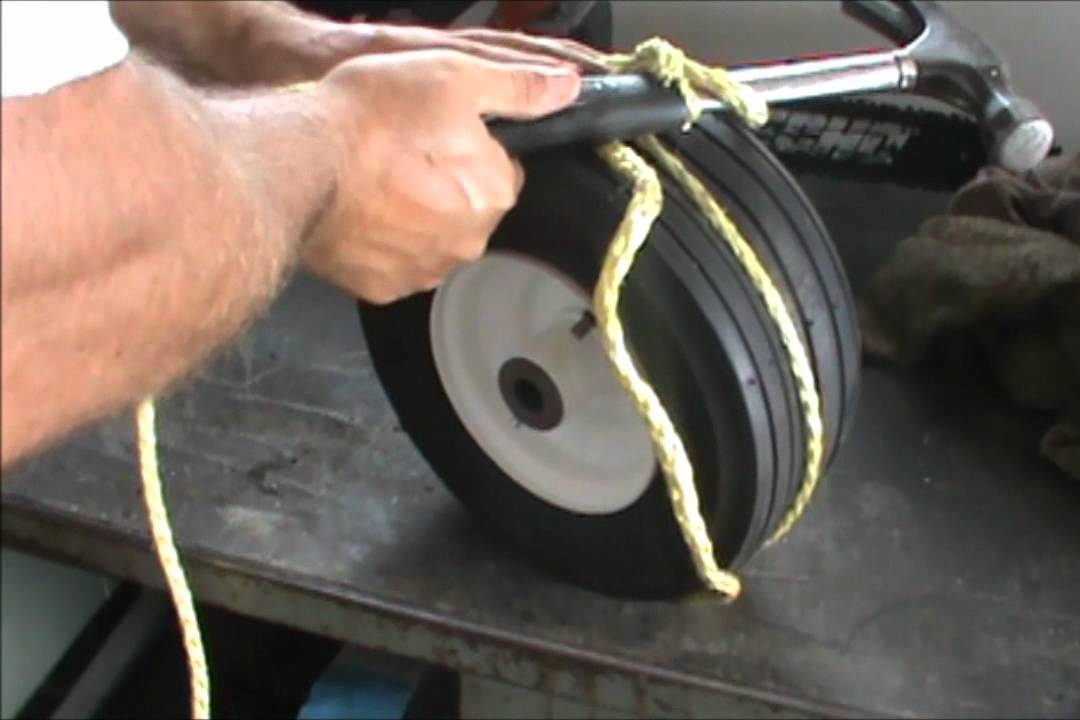 nine0003
nine0003
Minus - sufficiently low load limit. It is impossible to load such a trolley with a mass exceeding 200 kg. In addition, when driving there is a slight shaking, so these carts are not suitable for transporting fragile goods.
Please note! Because the tread tire is molded, the wheelbarrow can be used on rough surfaces where pneumatic specimens deteriorate quickly.
This material is an alternative to molded and pneumatic options. A polyurethane tire cannot be pierced, just like a cast one. At the same time, the ride and running characteristics are the same as those of pneumatic wheelbarrows. Polyurethane is characterized by high depreciation properties, wear resistance, durability. No additional maintenance is required to maintain performance. nine0003
Benefits of polyurethane wheels:

Made of polyurethane foam
Garden strawberry varieties
The main parts of the trolley and their functions: Its main functions are cushioning and keeping the device on the go. If the tube deflates, the constant bending of a hard tread tire will cause it to deteriorate.
If the tube deflates, the constant bending of a hard tread tire will cause it to deteriorate.
Wheel assembly
Why the leaves of the garden rose fall
The choice should be determined by the place for use. If you have to use on an area with a lot of stones or debris, you should choose a tire with molded rubber or urethane foam. If the area with a lot of bumps, it is better to choose pneumatic.
If you have to use on an area with a lot of stones or debris, you should choose a tire with molded rubber or urethane foam. If the area with a lot of bumps, it is better to choose pneumatic.
Important! The larger the wheel, the easier it is to pull the trolley.
One-wheel garden wheelbarrow
When buying a tire, it is necessary to indicate the marking with the pressure with which it can be inflated. Typically, this value is in the range of 25 to 70 P.S.I. However, it is advisable not to inflate more than half of the maximum pressure of the tire.
Garden cart wheels often go bad. For replacement, the following steps will have to be taken:
